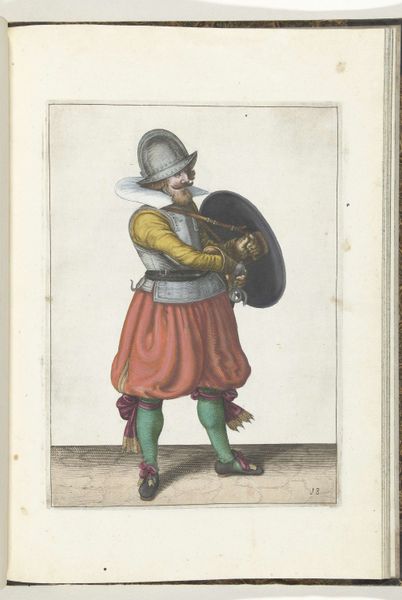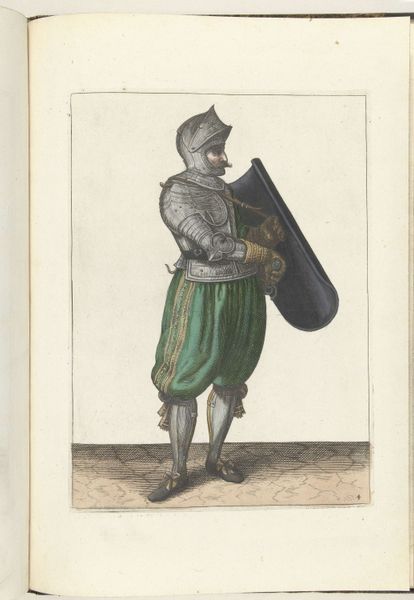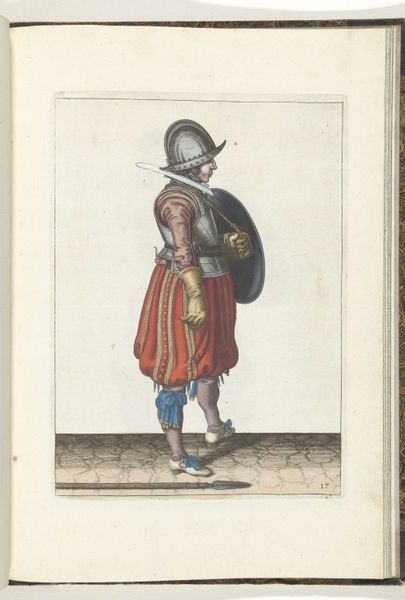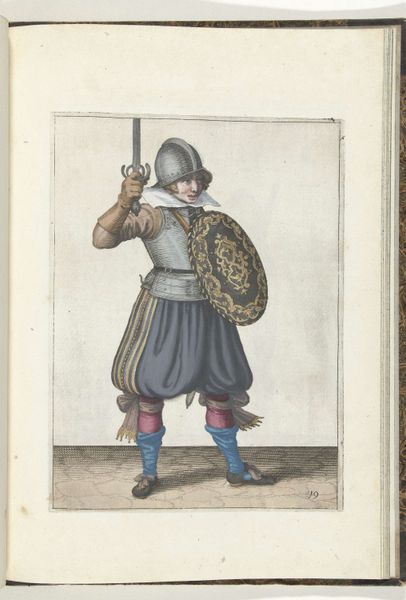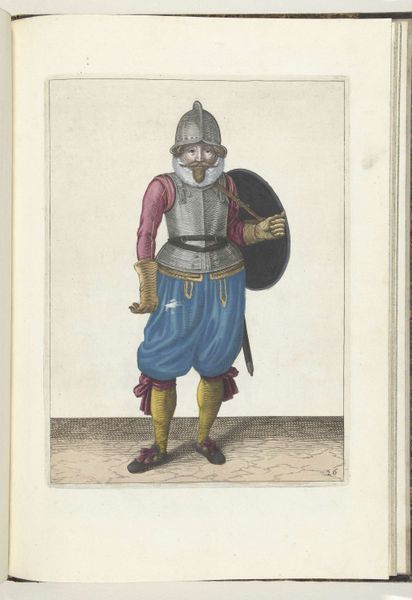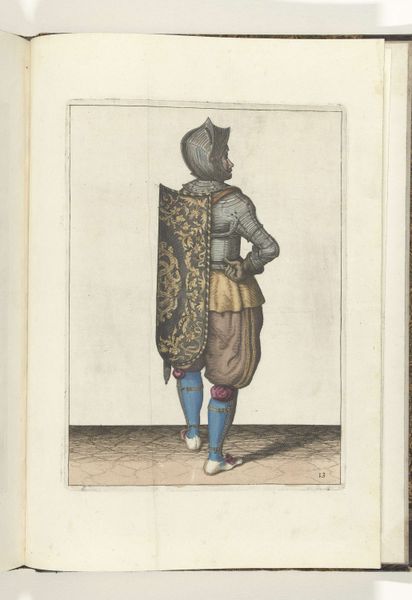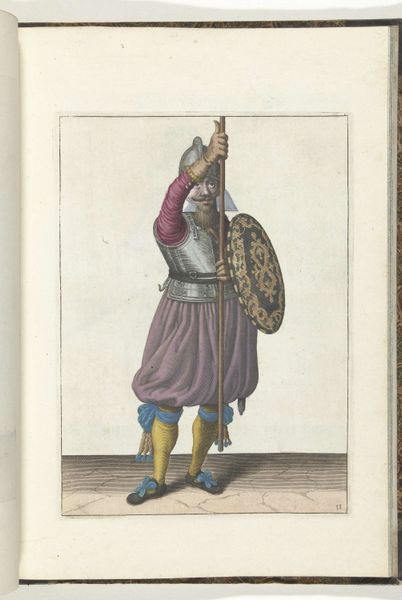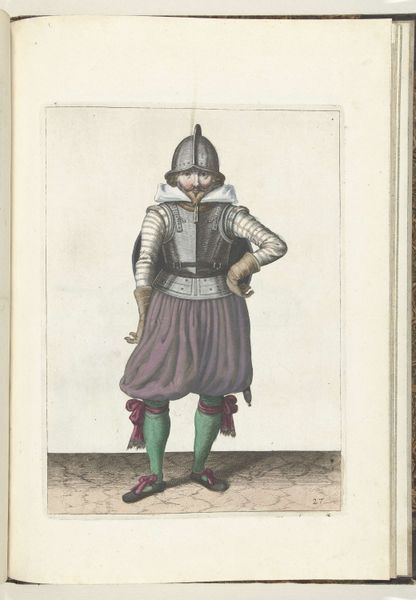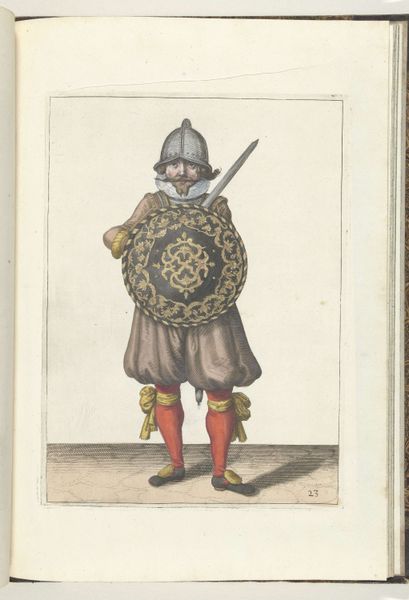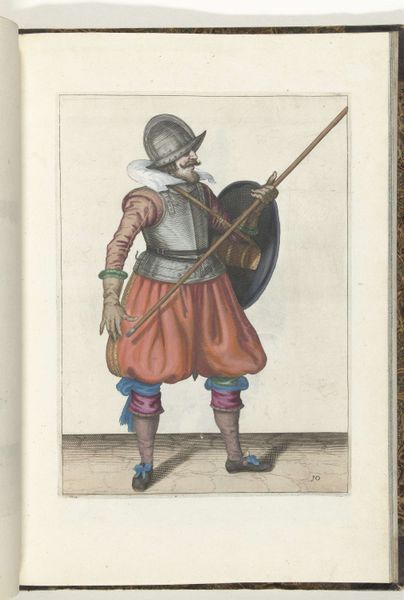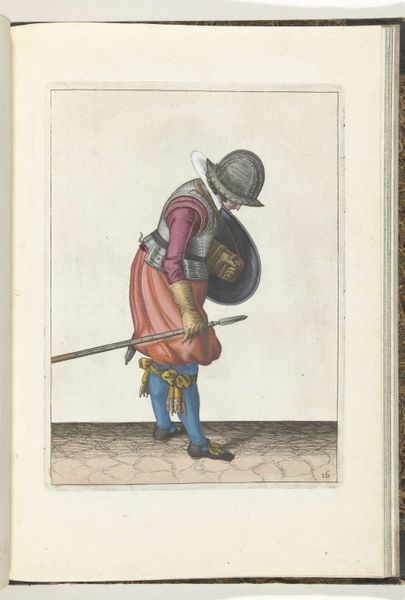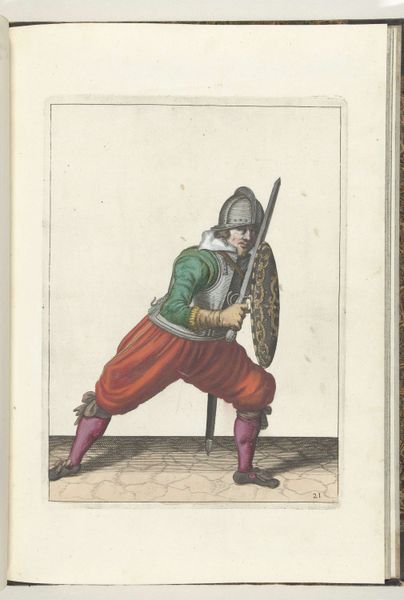
De exercitie met schild en spies: de soldaat trekt zijn arm uit de riem van het schild (nr. 25), 1618 1616 - 1618
0:00
0:00
drawing, paper, pen
#
portrait
#
drawing
#
weapon
#
baroque
#
paper
#
coloured pencil
#
pen
#
genre-painting
#
history-painting
Dimensions: height 260 mm, width 190 mm
Copyright: Rijks Museum: Open Domain
Curator: Here we have Adam van Breen's "De exercitie met schild en spies: de soldaat trekt zijn arm uit de riem van het schild (nr. 25)," created between 1616 and 1618. It's a drawing done with pen, coloured pencil on paper. Editor: Immediately, the material composition strikes me – the texture of the paper, the delicacy of the lines… it’s such a contrast with the subject’s militancy. Curator: Exactly. The technique itself softens the image, doesn't it? Consider the paper – a readily available, relatively inexpensive material – elevated here to depict someone of status, engaging in military practice. Editor: It definitely disrupts hierarchies of power and representation. Soldiers during this period in the Netherlands weren't just protecting territory, they were embodiments of political and religious upheaval. How does this imagery reinforce or challenge prevailing cultural notions? Curator: Van Breen gives us access to understand 17th century military labor by showcasing a foot soldier who isn't romanticized; we observe a mundane part of drills that isn’t valorized. It humanizes a cog within a broader, brutal military apparatus. Editor: I agree, his gesture isn’t one of triumphant action, but of perhaps awkward maneuvering. Note, though, the very intentional display of uniform: its materiality suggests status, regardless of that mundanity. This is definitely propaganda on some level, an insistence on order in uncertain times. Curator: The saturated colors, which we recognize were added with colored pencil, give off a rich but subdued effect; imagine the price it was at the time; yet juxtapose that extravagance with the everyday task. There's an inherent commentary on military investment here, highlighting the dichotomy of preparation versus combative action. The shield, almost comically large in comparison, further adds to that visual dissonance. Editor: Right – we can ask: who is being asked to consume this image, and what function does its consumption play? Does it provide assurance or fuel militaristic fervour? And ultimately, in its status as a drawing, how does this change its audience? It's one thing to rally troops in a town square versus on a circulated document. Curator: Precisely. Considering it as part of an instructional set makes the material that much more telling; it grounds the work with practical concerns that reveal broader attitudes about social class and function during an era in considerable flux. Editor: This definitely opens many historical, political, and cultural avenues to discuss. Curator: I concur, there's much to explore regarding military visual production, even from such a modest drawing.
Comments
No comments
Be the first to comment and join the conversation on the ultimate creative platform.
